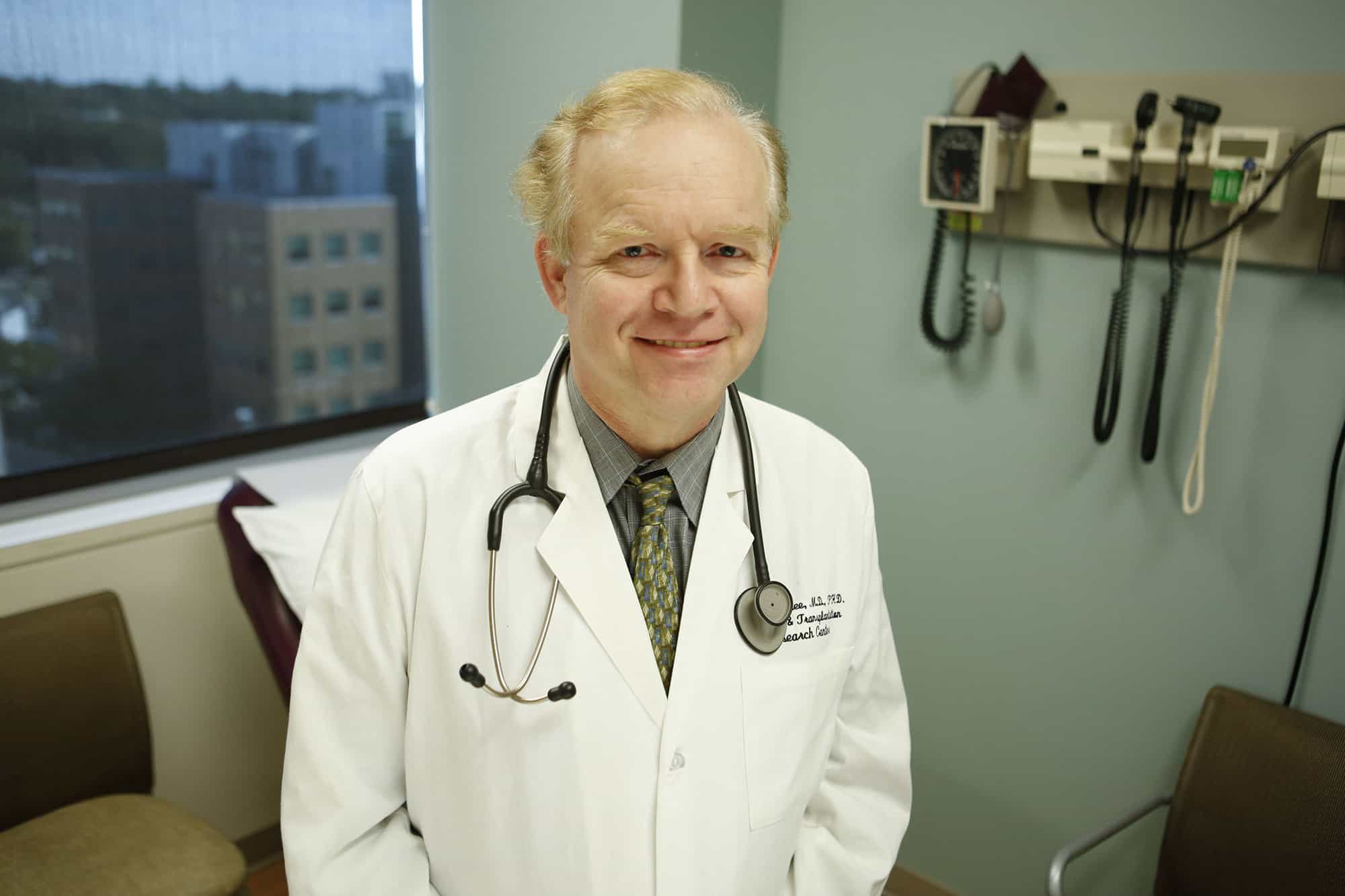UAMS Physician Establishes Second International Guidelines for Treating Castleman Disease
| LITTLE ROCK — Frits van Rhee, M.D., Ph.D., a myeloma researcher and clinician at the University of Arkansas for Medical Sciences (UAMS), was lead author on a recently published paper that establishes consensus diagnosis and treatment guidelines for a form of Castleman disease, a rare disorder of the lymph nodes and related tissues.
The recommendations were created to improve outcomes in patients with a form of the disease called unicentric Castleman disease (UCD) that affects a single lymph node area and can compress vital structures such a blood vessels, nerve bundles or the airways. In others, UCD can give rise to night sweats, fevers, weight loss and anemia
“Castleman disease is rare so people don’t know how to treat it and until recently there has not been any systematic approach to UCD,” said van Rhee, an international expert on Castleman disease. “These guidelines are meant to give treating physicians a framework for the diagnosis and treatment of UCD.”
Van Rhee is a professor of medicine, clinical director of the UAMS Myeloma Center and holds the Charles and Clydene Scharlau Chair for Hematologic Malignancies Research.
The paper, “International Evidence-based Consensus Diagnostic and Treatment Guidelines for Unicentric Castleman Disease” was recently published in Blood Advances, an online publication of the American Society of Hematology. It included research and input from van Rhee and 41 other specialists, researchers, and clinicians from 10 countries.
The expert panel convened in a number of meetings organized by the Castleman Disease Collaborative Network, which van Rhee cofounded in 2012 with his patient David Fajgenbaum, M.D. The panel based the guidelines on published literature, a review of treatment in published cases of UCD, and data from an international registry from the network for patients with Castleman disease.
In 2018, van Rhee was the lead author on a paper published in Blood, the journal of American Society of Hematology. “International, Evidence-based Consensus Treatment Guidelines for Idiopathic Multicentric Castleman Disease” focused on treating patients who had idiopathic multicentric Castleman disease (iMCD), affecting multiple lymph node areas.
The focus of this new paper is to establish similar guidelines for the management of UCD.
“Unicentric Castleman disease is more common than the multicentric form and the majority of people with UCD can be treated with surgical removal,” van Rhee said. “The problem is with the ones who can’t be treated with surgery.
“If it cannot be removed surgically and you have symptoms because the mass is pressing on something vital, treatment can be much more difficult. A classic example is a mass in the chest that is near one of the major airways like the windpipe or the two main branches of the windpipe. Sometimes the only way to remove the mass is to remove one of the lungs and obviously you want to try to avoid that.”
In those cases, the guidelines recommend partial surgical removal or treatment with other agents, including corticosteroids, antibodies or radiation.
“Radiation can have long-term side effects and can cause delayed problems so the patient’s age needs to be taken into consideration,” van Rhee said. “You want to try to avoid radiation for a benign disorder in a young patient. In selected patients a ‘watch and wait’ approach is justified. Still other treatment options include sealing off the vessels feeding the lymph node mass by embolization.”
Castleman disease occurs when an abnormal overgrowth of cells occurs in the lymph system, which serves as the main part of the body’s immune system. The disease, which affects 5,000 to 6,000 patients across the nation, was identified by Benjamin Castleman, M.D., in 1954.
Van Rhee was previously the principal investigator on a worldwide trial with siltuximab, which led to the first FDA-approved treatment for multicentric Castleman disease and led to the approval of the drug by the European Medicine Agency. In early 2018, he released a book, Castleman Disease, as part of the Hematology/Oncology Clinics of North America series of clinics review articles published bimonthly by Elsevier Inc. Van Rhee co-wrote the chapter, “Treatment of Idiopathic Castleman Disease” with Amy Greenway, his research associate, and Katie Stone, his lab director at the time.
UAMS is the state’s only health sciences university, with colleges of Medicine, Nursing, Pharmacy, Health Professions and Public Health; a graduate school; a hospital; a main campus in Little Rock; a Northwest Arkansas regional campus in Fayetteville; a statewide network of regional campuses; and eight institutes: the Winthrop P. Rockefeller Cancer Institute, Jackson T. Stephens Spine & Neurosciences Institute, Harvey & Bernice Jones Eye Institute, Psychiatric Research Institute, Donald W. Reynolds Institute on Aging, Translational Research Institute, Institute for Digital Health & Innovation and the Institute for Community Health Innovation. UAMS includes UAMS Health, a statewide health system that encompasses all of UAMS’ clinical enterprise. UAMS is the only adult Level 1 trauma center in the state. UAMS has 3,485 students, 915 medical residents and fellows, and seven dental residents. It is the state’s largest public employer with more than 11,000 employees, including 1,200 physicians who provide care to patients at UAMS, its regional campuses, Arkansas Children’s, the VA Medical Center and Baptist Health. Visit www.uams.edu or uamshealth.com. Find us on Facebook, X (formerly Twitter), YouTube or Instagram.###
